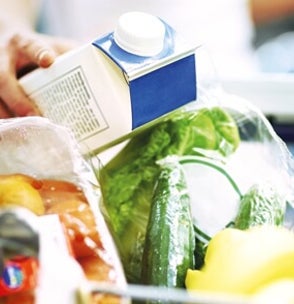Bold decisions will reap rewards
Scott Goodwin of the Glasgow Retail team takes a look at the changing landscape of the Scottish convenience retail market.
Business. Built around You.
Your expert business property advisers

The convenience retail sector is still growing at a rate of around 5% per year and is now worth over £37bn to the UK economy but it would probably be an understatement to say that 2016 has been a very tough year for retailers in Scotland.
Competition was high, and the independent retailer faced the ever-increasing presence of corporates in the sector, with Tesco and Sainsbury’s Local upping their game. Most of the large multiples are still actively acquiring sites to capitalise on changeable consumer behaviour as different grocery formats evolve.
We also saw several smaller chains popping up to sit just below the corporate stores. Scotfresh and Smartways have both entered the market and are both extremely well-operated.
In such a competitive market, it’s become clear that the traditional convenience store will have to expand its offering in order to stand strongly alongside others in the sector. A store increasingly has to offer a post office counter, food-to-go or even sign up to a franchise with the likes of Subway or Costa in order to increase footfall and profitability and in effect, two or three businesses are being run under one roof. It’s a trend that we’ve seem more and more, and one that is likely to continue into 2017 and beyond.
Retailers have also faced a number of pressures from the implementation of the National Living Wage, which has often seen smaller operators forced to keep staffing within the family to retain some level of profitability. Of course, this is in direct opposition to the Government’s intentions as store operators cannot afford to pay these increased staff costs and simply “keep it in the family.”
Given the strains on the market, and the increase in operating costs, independent retailers have been more reluctant to pay high rents for their business, and are becoming more inclined to buy a property. We’ve found that when a good-quality, well-priced site comes to the market, applicants are keen to view, offer and complete quickly.
We see high levels of interest – from both corporate and independent operators - for stores that are performing well, especially with weekly turnovers of £20,000 and above.
However, for both vendors and potential buyers, there is a large amount of uncertainty surrounding the convenience sector. As the year’s Brexit vote re-awakened the “once-in-a-generation” Scottish independence vote issue for the second time in as many years, it is unlikely that the market will come alive any time soon. Although buyers and sellers are in the market, they are thinking hard before listing their businesses for sale, and buyers are reluctant unless the business is in the perfect place and at the perfect price.
Going into 2017, it would be easy to say that nothing much will change, but we are seeing positivity. Deals are there to be done if buyers and sellers can rise above the uncertainty and make bold decisions about their businesses and how they want to develop and thrive within the sector.